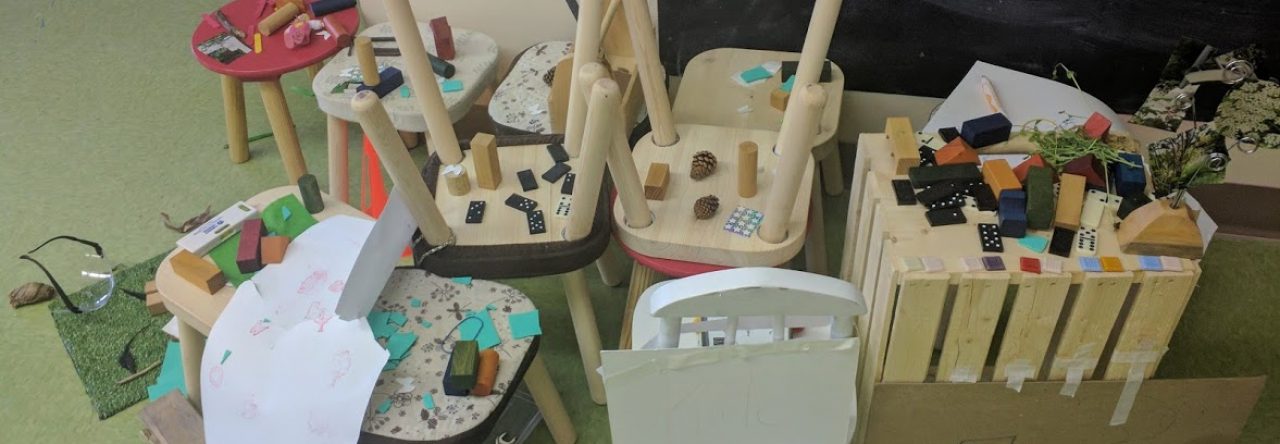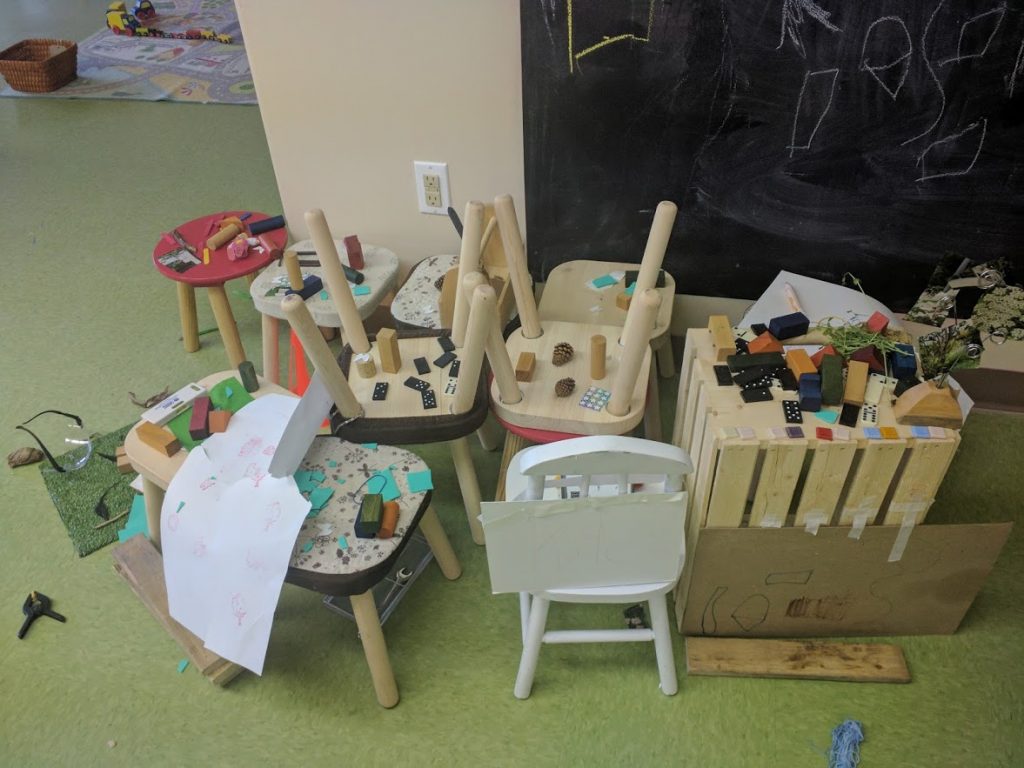
What happens when children can take the lead of their play? Choosing where to play, when to play, when to stop. Choosing to choose what they choose to choose!
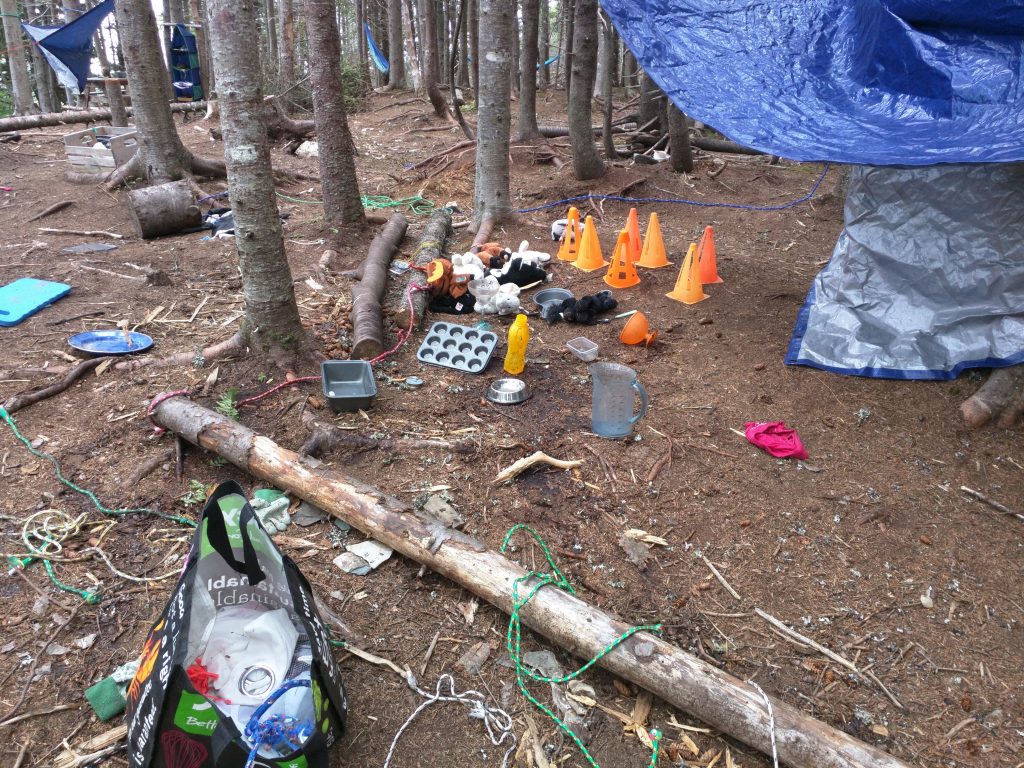
The adults? They are still present, on the cusp of the play. Available, as needed. Intentionally yo-yoing in and out. Stepping back, and allowing the play to unfold.
At the end of the day, once the children have left .. what is left behind?
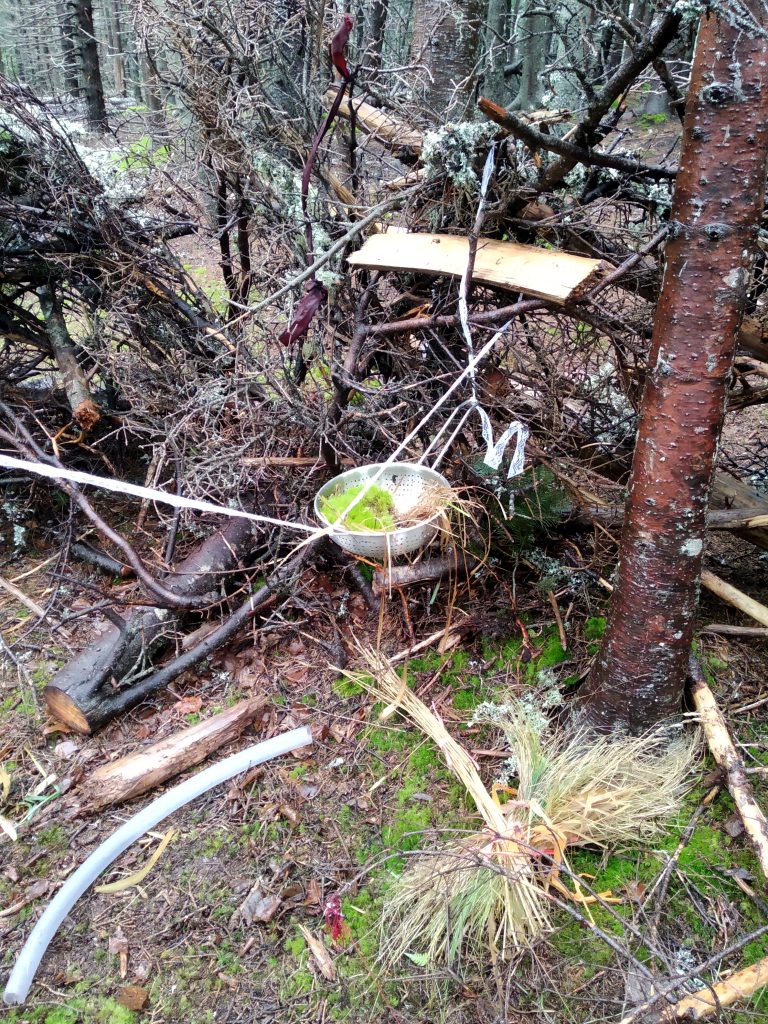
Traces that someone has been here, outside – impressions in the mud from boots; strings and ropes hanging, dangling, connecting, buckets, pylons, sticks collected in a neat pile, stones layed unnaturally – a path? Could it be fairies?
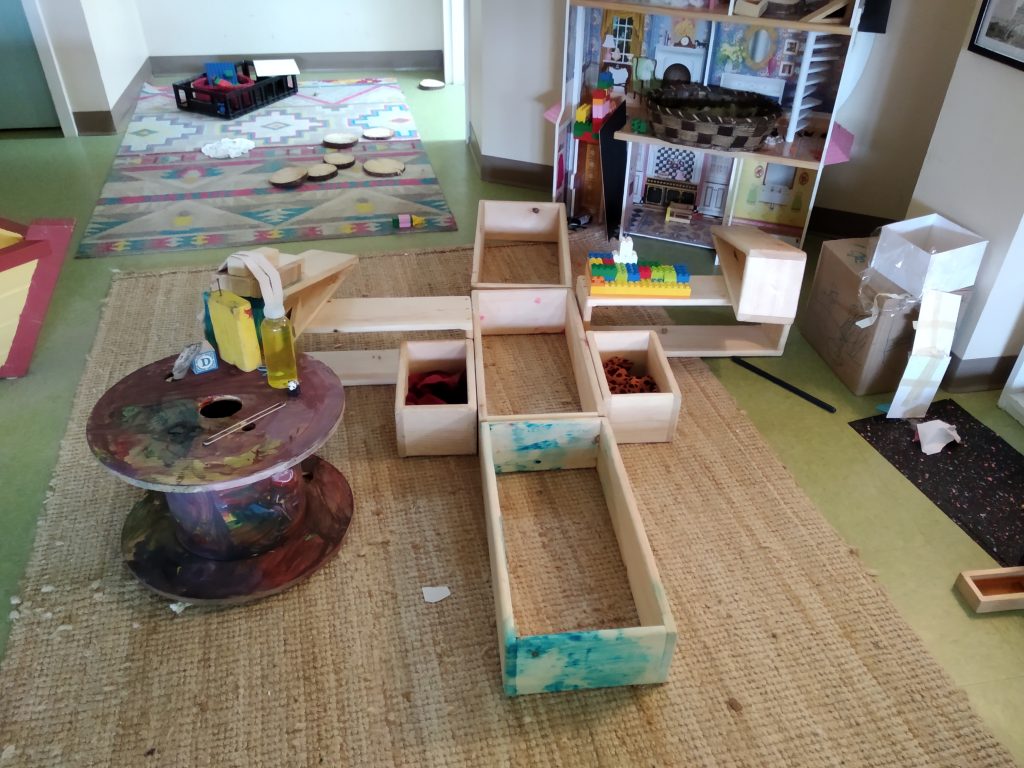
Inside – blocks stacked, tipped, and adorned with ribbon, bottle caps, fabric, and small plastic animals, odds and ends strewn, heaped, and hidden.
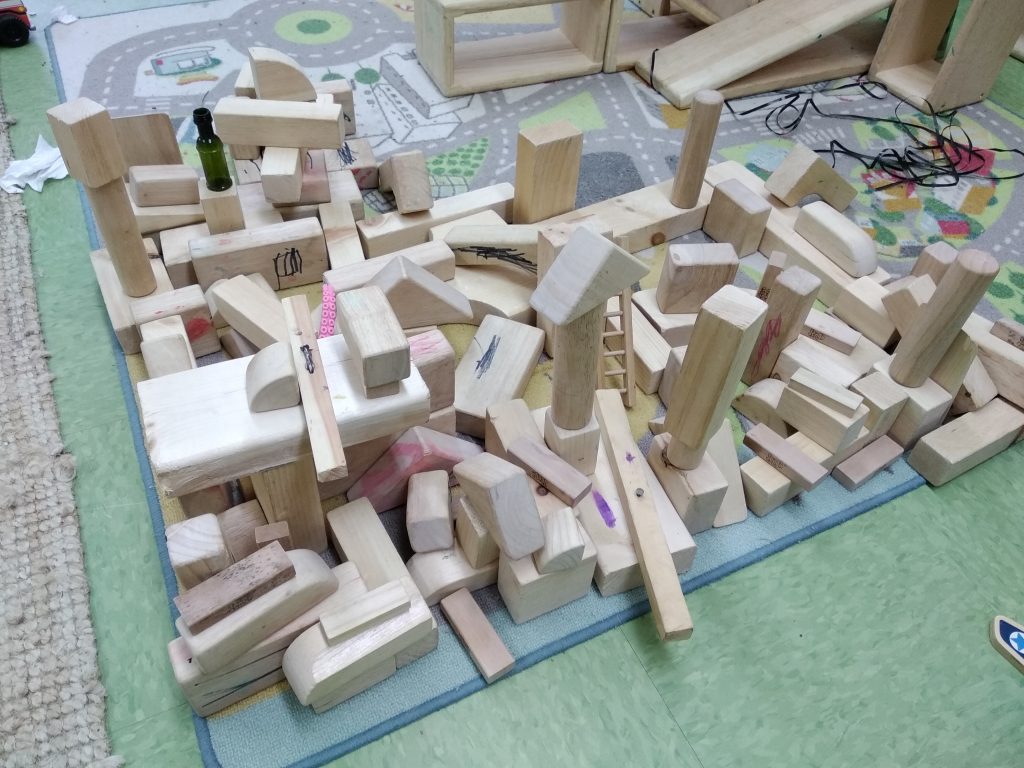 What stories do these scenes tell? A child building a fortress for all the animals ? A child figuring out how to tie a knot ? Two children coming together, for the first time, to make a potion ? A moment of frustration ? A quiet moment of relief ?
What stories do these scenes tell? A child building a fortress for all the animals ? A child figuring out how to tie a knot ? Two children coming together, for the first time, to make a potion ? A moment of frustration ? A quiet moment of relief ?
Something much deeper, many layered, and interconnected (place, child, materials, adults, theory, practice).
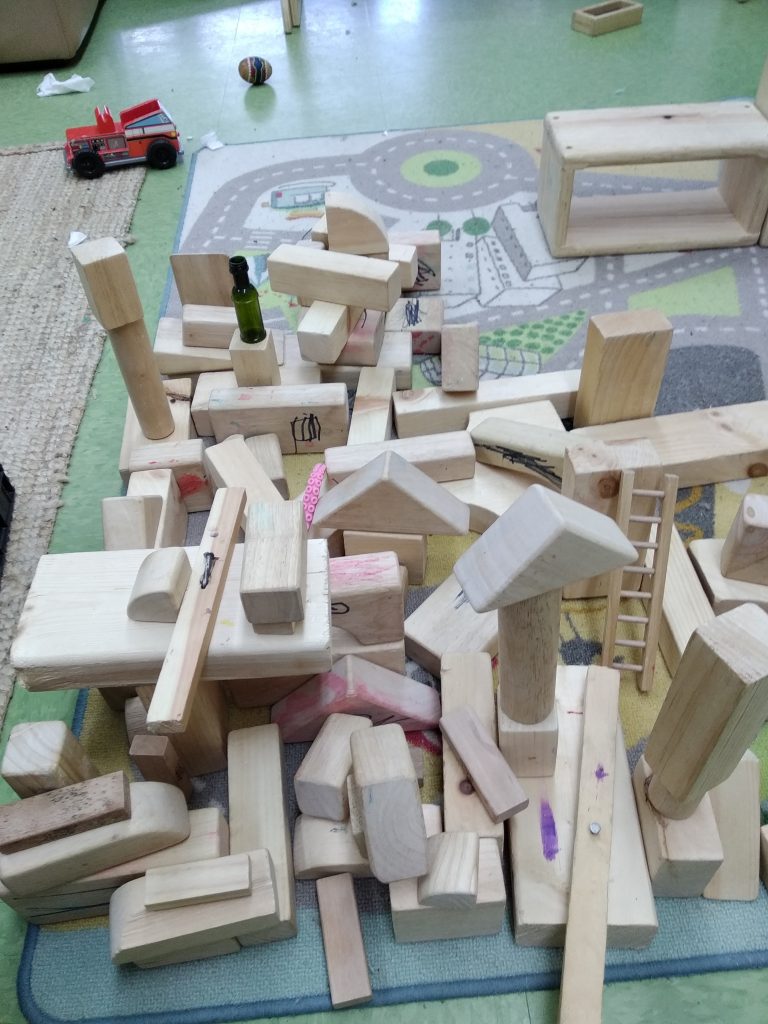
Play is sometimes messy, chaotic, and understood only partially by those involved and observing.
What can I learn about myself, my practice, and the children a part of the programs I am fortunate to be a part of (past and present) as I reflect on the residue I captured, reflect on what exists outside of the frame, and make connections to theory and dialogue with colleagues.
This blog is a means of thinking about play and deepening my practice, and maybe connecting with others who may have the same interests and questions.
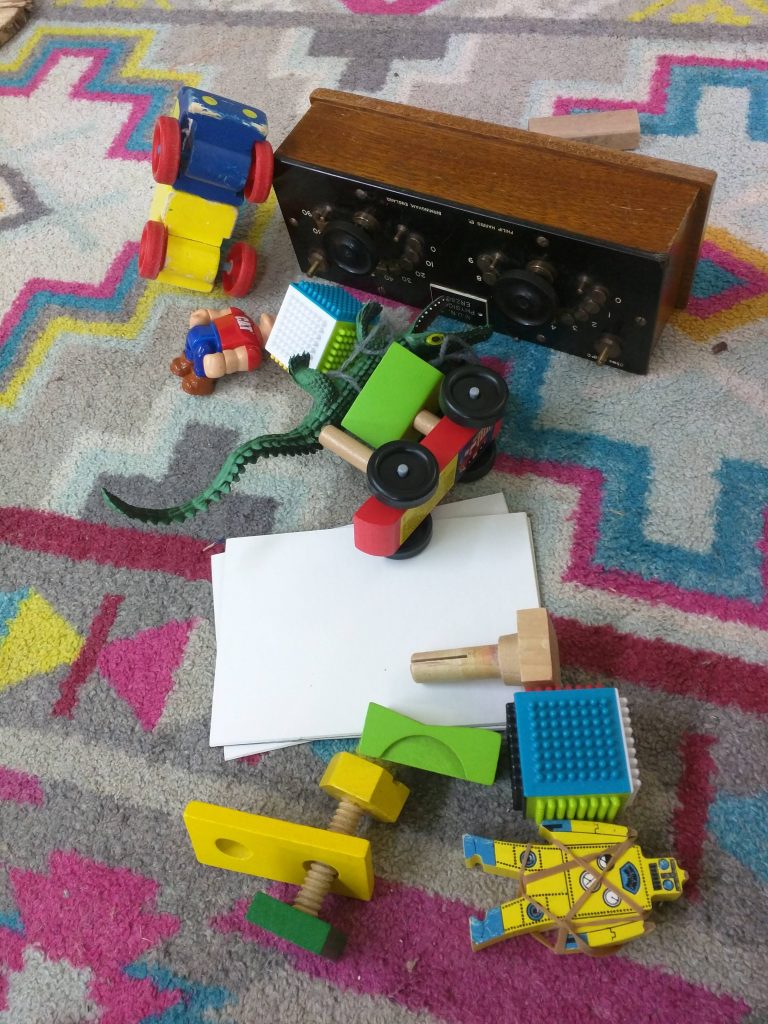
Welcome!
